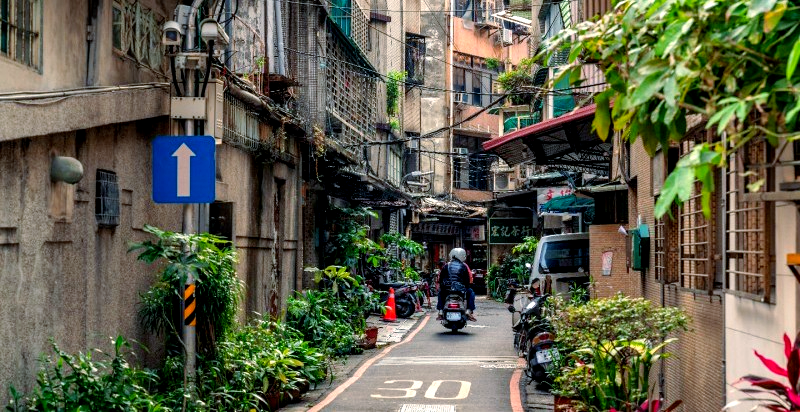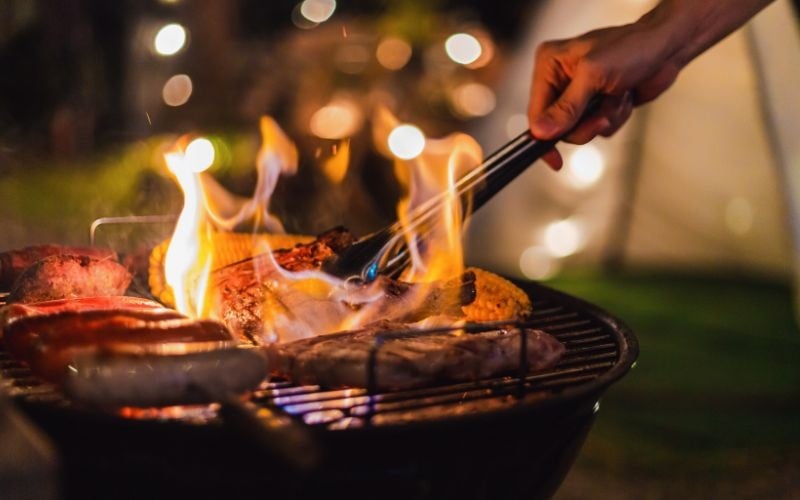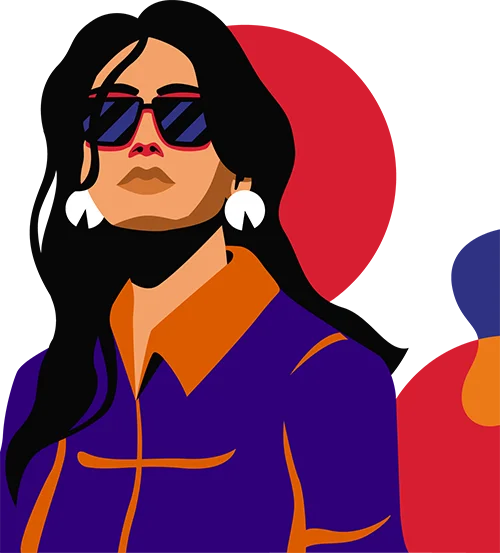In 1947, Generalissimo Chiang Kai-shek tried to kill my family. In 2010, I traveled to Taiwan to find out why. I arrived on a balmy morning in late August, laden down with giant suitcases and burning questions about the past.
That first day, I walked out into the streets of Taipei, armed with my map, a Chinese-English dictionary, an apple, and a water bottle—not unlike an astronaut taking her first steps on a new planet. I had a Fulbright grant to stay here for a year, which I hoped would be enough time to get answers. Within minutes, my jeans were soaked with sweat, and my blue T-shirt soon followed.

I was a twenty-six-year-old American, and this was my first time traveling to both Asia and south of the Tropic of Cancer. Waves of heat washed over me as I strolled beneath palm trees on the wide boulevards of the Da’an district. Seeking shade, I turned off the main road and made my way into a web of narrow alleyways crammed full of shops.
Balconies were covered with hanging laundry, food stands and restaurants boasted tables and stools spilling out onto the pavement, and overlapping signs of all colors advertised fares in Chinese characters I couldn’t read. These were the days before universal smartphone usage in Taipei, so I sure didn’t have one. Here, the streets pulsed at a slower pace than in New York City.
I felt like I was falling back through time into the past. As I peered into the tiny shops tucked into nooks and dodged scooters and bicycles buzzing by me in all directions, I wondered where my Grandma Anna and Grandpa Thomas had lived in Taipei in 1945. I wanted to dream my way back into their lives.
After World War II, Grandpa Thomas became an outspoken critic of Chiang Kai-shek’s Kuomintang (KMT) Chinese government, which had taken control of Taiwan through “retrocession,” a return to China’s ownership of the former province by the Japanese government when they surrendered in 1945. Yet Taiwan had been a Chinese province in name only. A century earlier, it had been a wild frontier of an island, barely governed by the Qing dynasty.
During that era, Taiwan was settled by Fujianese emigrants and Hakka settlers (an ethnic minority with their own culture and language) from mainland China, who shared the mountainous land with the indigenous tribes who had lived on the island for thousands of years. In 1895, Japan won Taiwan from China in the Treaty of Shimonoseki, ending the Sino-Japanese War, and from 1895 to 1945, the island was a colony of Japan. The cultural influences of Japan persist to this day: in the tiny coffee shops with their enticing nutty aromas, in the plethora of Japanese-influenced sushi restaurants, and in Taiwan’s highly efficient postal service and train systems.
This beautiful island offers up a vibrant mélange of cultures, the effects of which washed over me in the heat, even as the Mandarin characters swam before my eyes and confused me with their complex strokes. Wandering down the meandering lanes, I imagined my grandparents walking these very same streets in 1947, right before a violent riot called the 2/28 Incident sent Grandpa Thomas fleeing Chiang’s secret police in exile to Hong Kong. In Hong Kong, he and his brother Joshua became more outspoken freedom fighters, escalating their criticisms of the government to form the Taiwanese independence movement.
In the 1950s, they appealed to the United Nations and America for political and military support and saw themselves as the force that would overthrow yet another colonial power—finally returning control of Taiwan to the hands of Taiwanese people. These were Thomas and Joshua’s plans. What happened to everyone next had been shrouded in mystery for six decades.
While Grandpa Thomas was building his political movement, my Grandma Anna was caring for her four children alone in Hong Kong. She was cut off from the Liao family in Taiwan, from any financial support, and from all connections to her home. With everyone’s lives at risk, she decided that her children’s futures were too steep a price to pay for Thomas’s dreams of freedom for Taiwan, so she left Asia to bring the children to America and start a new life.
In 1951, Grandma Anna and her children arrived in Brooklyn when my dad, the youngest, was just two years old. She never spoke of her husband again. My dad Richard grew up telling anyone who asked that his father was dead, and he never knew anything about Grandpa Thomas’s independence movement in Taiwan.
As his only child, I was the youngest Liao grandchild, and the Liao family’s silence about the past only stoked my curiosity. Tell a child nothing, and she will become obsessed with knowledge. Now, decades later, I was here to learn everything: to meet Grandpa Thomas’s family members, the Taiwanese Liaos, and to find out what had happened to him.
I was here to discover why he wanted independence for Taiwan, how he had built his independence movement, and how he contributed to Taiwan’s journey to democracy. But Grandma Anna had kept such a tight silence her whole life that I had been afraid to ask questions for fear of upsetting her. Years after her passing, I interviewed my aunts and uncles before I came to Taiwan, but they had been so young when the family escaped.
There was just so much I didn’t know. Yet the kicker was still to come. On my first day in Taiwan, as I wandered the streets of Taipei trying to orient myself and trace my lost family’s history, I made a troubling discovery: In America, I had studied .
I had learned simplified characters, which are used in mainland China and across the Chinese-speaking world. As the exception to nearly every rule, Taiwan uses traditional characters, meaning that I showed up for my year of research completely illiterate. How could I break several decades of silence and excavate the truth about Taiwan and my family if I couldn’t read—or even order dumplings? __________________________________.




















